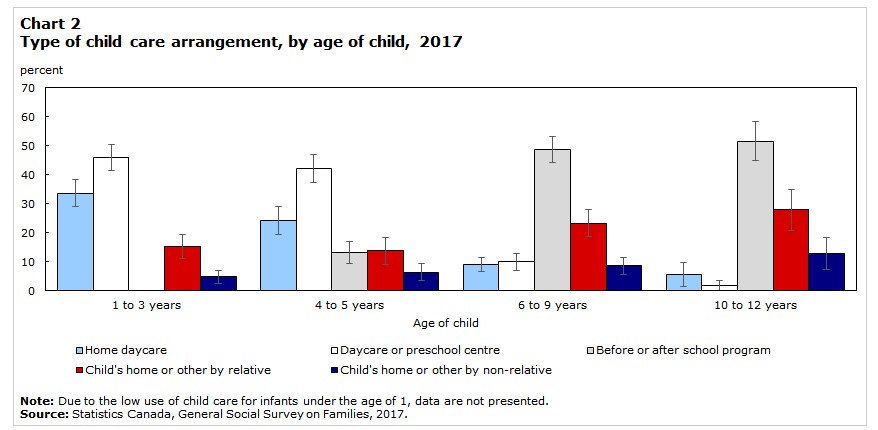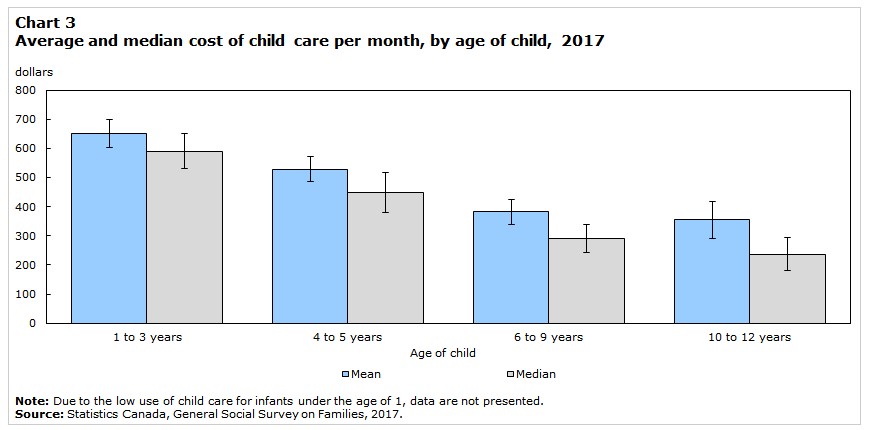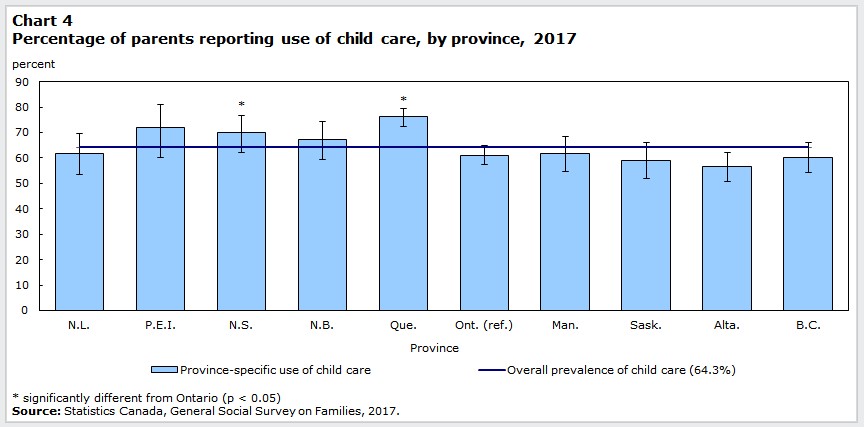The Economics and Statistics Division maintains archives of previous publications for accountability purposes, but makes no updates to keep these documents current with the latest data revisions from Statistics Canada. As a result, information in older documents may not be accurate. Please exercise caution when referring to older documents. For the latest information and historical data, please contact the individual listed to the right.
<--- Return to Archive
For additional information relating to this article, please contact:
August 09, 2021STUDY: PARENTS' USE OF CHILD CARE SERVICES AND DIFFERENCES IN USE BY MOTHERS' EMPLOYMENT STATUS Statistics Canada recently released an article examining child care use by Canadian parents, types of child care arrangements, and cost, along with the connection between mothers' employment characteristics and the use of child care. The study uses data from the 2017 General Social Survey on Families. This article provides a summary of the findings of the study.
Overall, 64% of parents used some type of child care in 2017. The use of child care was highest for parents with two children (71%), followed by around 60% of parents with one, three, or four or more children.
Only 15% of parents with infants used child care in 2017. Parents of children aged 4 (74%) reported the highest use of child care. The reported use of child care declined after children reached school age with only 42% of parents of 12 years olds using child care.

For parents of children aged 1 to 12, 69.7% of lone-parent families reported using child care. This was somewhat higher than the partnered parent using child care (64%).
Younger parents reported higher use of child care in 2017. 70% of parents aged 30 to 39 used child care in the preceding year compared to 59% of parents aged 40 to 49, and 52% of parents aged 50 to 79.
There were also differences in the use of child care between immigrant and Canadian-born parents. 53% of immigrant parents and 54% of non-permanent resident parents reported using child care in the preceding year. This was lower than the 69% of Canadian-born parents.
Statistics Canada noted that differences in child care use between Indigenous parents living off reserve and non-Indigenous parents were not statistically significant, and more research is needed to provide further insight.
Half of the parents of children aged 1 to 3 used child care on a regular basis, as did 55% of parents of children aged 4 to 5. The use of child care on a regular basis declined to 39% for parents of 6- to 9-year-olds and 25% for parents of 10- to 12-year-olds. Among those using child care on a regular basis, the majority of parents reported having their children in care five or more days per week, regardless of their child’s age.
Among parents of children aged 1 to 5 years old, a daycare or preschool centre care was the most common type of child care used followed by home daycares. Thirteen percent of parents with children aged 4 and 5 reported using before or after school care, whereas a majority of parents of school-aged children (6 through 12) reported using before or after school care, followed by care provided in the child’s home.

Regardless of the child’s age, parents reported reasons of convenience such as the location and hours of operation, and the trustworthiness of the child care provider as the main reason for selecting a particular child care type. Among parents who reported not using child care, the predominant reasons were that a parent is at home, whether on parental leave or otherwise, or that the parent did not need or want child care.
Majority of parents of young children (aged 1 to 5) reported the main reason for not using child care was because a parent was at home. However, the reason for a parent being at home was not reported.
Between 10% and 15% of parents of 1- to 5-year-olds reported that unemployment or unpredictable work schedules contributed to them not using child care services. An additional 8% reported that they did not use child care due to its high cost.
Among parents paying for child care, the average cost of care per child was highest for young children, and decreased in older age groups.
Seventy-two percent of children aged 1 to 3 years old attended child care full time. For school aged-children, between 86% and 90% of parents reported using child care part time.

In 2017, 70% of Nova Scotia parents reported using child care. The highest rate of child care used was reported in Quebec (76.2%) followed by Prince Edward Island (71.8%). Alberta (56.7%) had the lowest rate of parents using child care in 2017.

Only 30% of mothers who were unemployed reported using child care compared to 74% of employed mothers. Among employed mothers, a higher proportion of those working regular schedules (76%) reported using child care than those working irregular schedules (68%).
Seventy eight percent of mothers who were employed full time reported the use of child care compared to 65% of those who were employed part time.

Looking at the five occupational categories identified, a higher proportion of mothers of young children reported using child care than mothers of school aged children. Among children 1 to 3 years old, mothers working in Health (96.4%) and Business, Finance and Administration (90.7%) sectors reported the highest use of child care. Mothers working in education, law and public service reported the lowest rates of child care use at 71.0%.
Source: Statistics Canada; Parents’ use of child care services and differences in use by mothers’ employment status
<--- Return to Archive